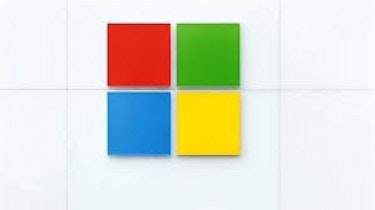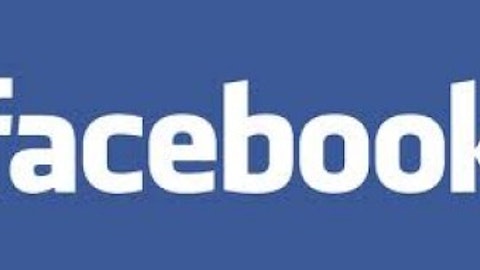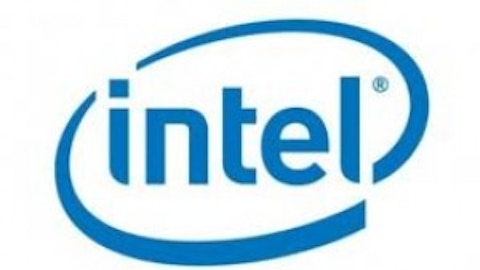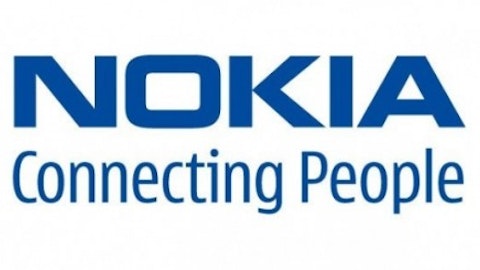What if your life were more like a video game? This is a popular question in fiction, particularly in film. The notion of being part of an artificial game-like reality has made cult classics out of movies as diverse as Tron and The Matrix, and was recently skewered by Disney‘s latest animated hit, Wreck-It Ralph. But what if your life really were like a video game? What if you were living in a video game right now?
You might be able to figure that out in a few years if Microsoft (NASDAQ:MSFT) has anything to say about it. The software giant, which is now increasingly becoming a hardware giant, unveiled an Xbox-compatible technology it’s dubbed IllumiRoom at the Consumer Electronics Show, which promises to bring games into your living room… by projecting them across your entire living room. This was called “LiveWall” in early Electronic Entertainment Expo rumors, but this is the first time we’ve seen a real demonstration of the system in action. Here’s the proof-of-concept video Microsoft Corporation (NASDAQ:MSFT) demonstrated during the Samsung keynote, which Microsoft claims is all live, with no post-production:

Sony (NYSE:SNE) has its own augmented-reality plans and has even created videos to show off its vision, but they were designed as viral ads rather than real proof-of-concept tech demos. Microsoft’s tech is closer to the living room than anyone else’s, and that could be the edge that gives the next Xbox an insurmountable lead in the console wars. But what if that’s just the beginning?
Step into the holodeck
The first thing that comes to most peoples’ minds with these videos is the Star Trek holodeck, a reliable plot crutch that filled many lazy episodes with musings on the nature of simulated reality. We’re clearly not there yet, but IllumiRoom is just the first 21st-century step into a world of technology purportedly hundreds of years more advanced than ours.
When games become truly immersive, what’s the appeal of a tiny timewaster on a handheld screen? When movies can be projected all around you — this is one of the fanciful promises of Sony’s videos — what’s point of RealD (NYSE:RLD) 3-D glasses or IMAX (NYSE:IMAX) screens? The major limitation to this projection technology against those two established immersion purveyors is a lower level of image fidelity, and there’s no reason to expect this to remain a problem for very long. Consider that the Kinect itself wasn’t even released until the tail end of 2010, and it’s already found use in ways most people would have never considered several years ago.
It’s hard to find any company that’s putting more weight behind augmented reality than Microsoft Corporation (NASDAQ:MSFT). With nearly $10 billion in trailing-12-month research and development expenses, Microsoft could easily expand its research in this area even further — but how much further could it go? Beyond IllumiRoom and OmniTouch, Microsoft’s also developed several other Kinect- and projection- based augmented-reality technologies, some of which may now be part of IllumiRoom. Microsoft Corporation (NASDAQ:MSFT) filed for a patent on this technology in early 2011, which should only widen the gap between it and its potential competitors. When the patent became public knowledge, most commenters called it the “holodeck patent,” and it’s probably going to continue to be called “holodeck tech” going forward. I wouldn’t be surprised to see a new small business model spring up in the future around custom-built game rooms for the IllumiRoom experience. Why settle for your boring old living room when you can have a real holodeck?
What is real?
Microsoft’s effort is the inverse of Google (NASDAQ:GOOG)‘s with Project Glass — one aims to expand your visual experience to fill the entire room, the other aims to contain your entire room within your visual experience. Both of them move the world inexorably toward the same end, which is the construction of an artificial reality over our real one. Today, their best research has produced devices that enhance an experience, whether through visual overlays in your face or graphical overlays on your walls. What will tomorrow’s augmented reality technology look like? How far will we go before the virtual becomes better than the real?
What other high-tech tricks does Microsoft Corporation (NASDAQ:MSFT) have up its sleeve? Is immersive hardware really the next step for this dominant operating system company? You’re bound to have many questions about Microsoft’s future, and our best tech analysts are here to help. We’ve put together an exclusive premium research report highlighting key opportunities and major threats for Microsoft Corporation (NASDAQ:MSFT), and what the company has to do to again become the great investment it once was during the dotcom era. Want to learn more? Click here to subscribe today.
The article Microsoft Wants to Beam You Up to the Holodeck originally appeared on Fool.com.
Fool contributor Alex Planes holds no financial position in any company mentioned here. Add him on Google+ or follow him on Twitter @TMFBiggles for more news and insights.The Motley Fool recommends Google, Imax, and Walt Disney (NYSE:DIS). The Motley Fool owns shares of Google, Imax, Microsoft, and Walt Disney. The Motley Fool is short Sony. Try any of our Foolish newsletter services free for 30 days. We Fools may not all hold the same opinions, but we all believe that considering a diverse range of insights makes us better investors. The Motley Fool has a disclosure policy.
Copyright © 1995 – 2013 The Motley Fool, LLC. All rights reserved. The Motley Fool has a disclosure policy.





